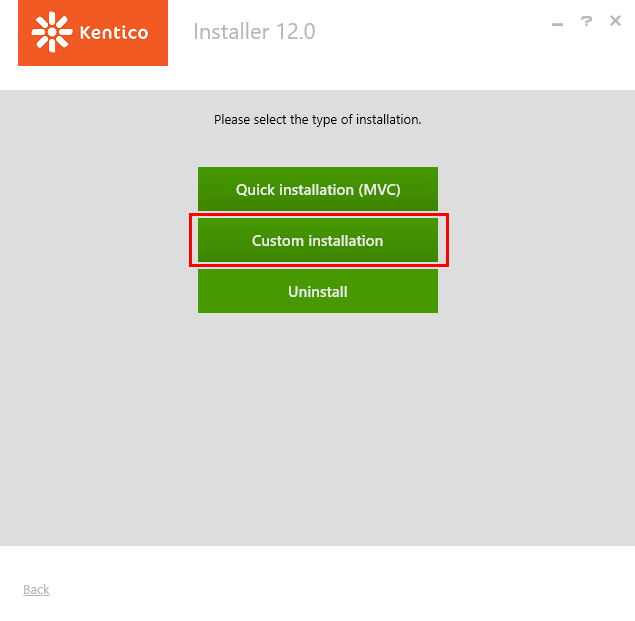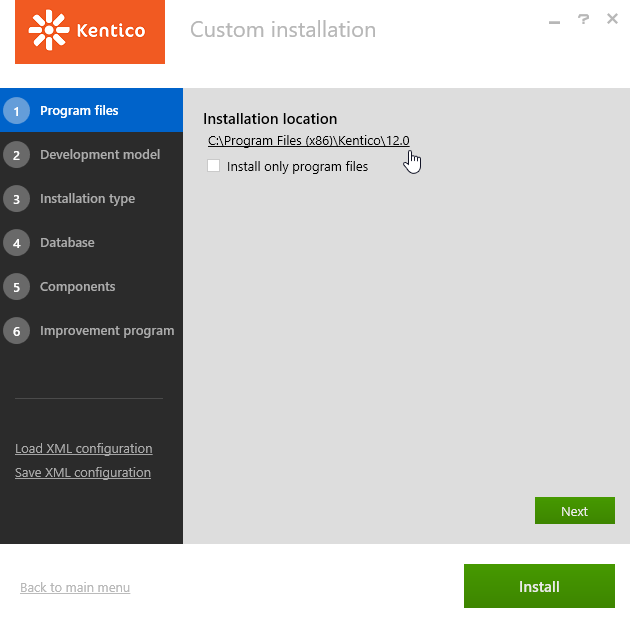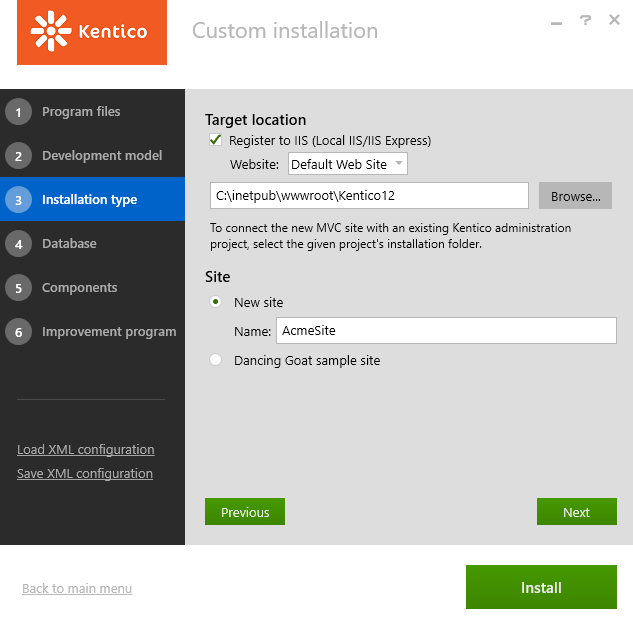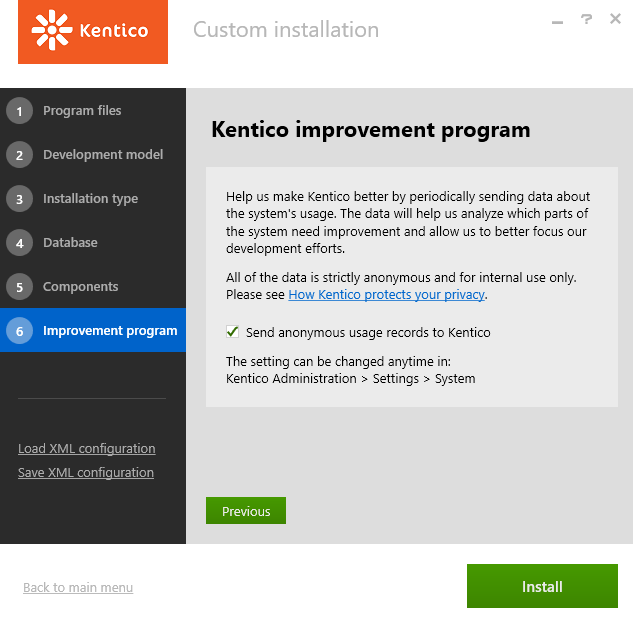Installing Kentico MVC projects
The following procedure describes how to install Kentico for the purpose of developing websites using the MVC model. The installation creates two separate projects – an MVC project for the live site, and a Kentico project that provides the content editing and administration interface.
Click Next on the welcome screen of the installer.
Select your country. The installer automatically tries to pre-select the appropriate country based on your system’s locale.
Accept the license terms.
Click Next.
Click Custom installation.

Check if the installation location for the program files suits you (these are only the setup files, not the web project).
- Click the file system path if you wish to specify a custom location for the program files.
- When should I install only program files?

Click Next.
Leave the MVC development model selected and click Next.
If you wish to use the Portal Engine development model, see Installing Kentico.
Specify the target location for the new web projects.
Installing new MVC sites into existing Kentico instances
If you wish to add the new MVC site into an existing Kentico administration project, set the target location to the given project’s installation folder.
In this scenario, the installer adds the MVC project into the specified folder and uses the administration project’s existing database. A new Kentico administration project is not created.

Configure the installation type options:
Register to IIS – if enabled, the installer registers the new web projects as applications in the local Internet Information Services server.
- When to register installed projects into IIS?
- If you do not have IIS installed, the utility automatically installs the simplified version, IIS Express.
- Note: If you disable registration to IIS in the installer, you need to create and configure the IIS applications manually after the installation (for both the MVC and Kentico administration projects). Also, you need to set the Presentation URL of your site in the Kentico Sites application to the URL where your MVC live site is running (see Setting domain names for sites).
Site
New site – installs a blank MVC project suitable for the development of a new site. Enter a Name, which affects all things related to the new MVC project, such as the project folder on the file system, the project and assembly name in Visual Studio, the virtual directory and application name in IIS, and the name of the corresponding site in Kentico.
Dancing Goat sample site – installs a sample MVC project and site. Suitable for evaluation purposes or as inspiration for your own development.
License limitations for the sample site
The Dancing Goat sample site uses features that are only available in specific Kentico license editions. If you use a license edition lower than Kentico EMS, you may encounter problems. The initial trial license is equivalent to an EMS license.
Click Next.
Select the I have access to SQL server option.
If you are installing a new MVC site into an existing Kentico instance, the installer automatically uses the given instance’s database. In this scenario, all information on the Database tab is read-only, and you can directly start the installation by clicking Install (skip the remaining steps on this page).
Specify the name of your SQL server and choose an authentication option.
If you choose the Integrated Windows authentication option, make sure that your Windows account exists as a user in the SQL server database, and has full permissions and the correct schema configured (the recommended database schema is dbo).
Click Establish connection.
Type the name of a new database for your web project.

Click Next.
Choose which additional components you wish to install for the Kentico administration project (not available when installing an MVC site into an existing Kentico instance).
Click Next.
Decide whether to enable the Kentico improvement program for the installed instance (via the Send anonymous usage records to Kentico checkbox).

Click Install.
After the installation is successfully finished, the administration interface opens in the default browser. If you have installed the Dancing Goat sample site, the live site also opens in another tab. For new MVC sites, the installation creates a blank project and an empty site, so you need to develop the code and add content before the live site becomes available.
Default URLs and administration interface credentials
The default URL of the live site is based on the following pattern: http://localhost/<target location folder>_<site name>
For example: http://localhost/Kentico_AcmeSite or http://localhost/Kentico_DancingGoatMvc (for the Dancing Goat sample site)
The default URL of the administration interface is: http://localhost/<target location folder>_Admin
To sign in to the administration interface after the installation, use the administrator username with a blank password. We strongly recommend setting a new password for the administrator account after the installation.